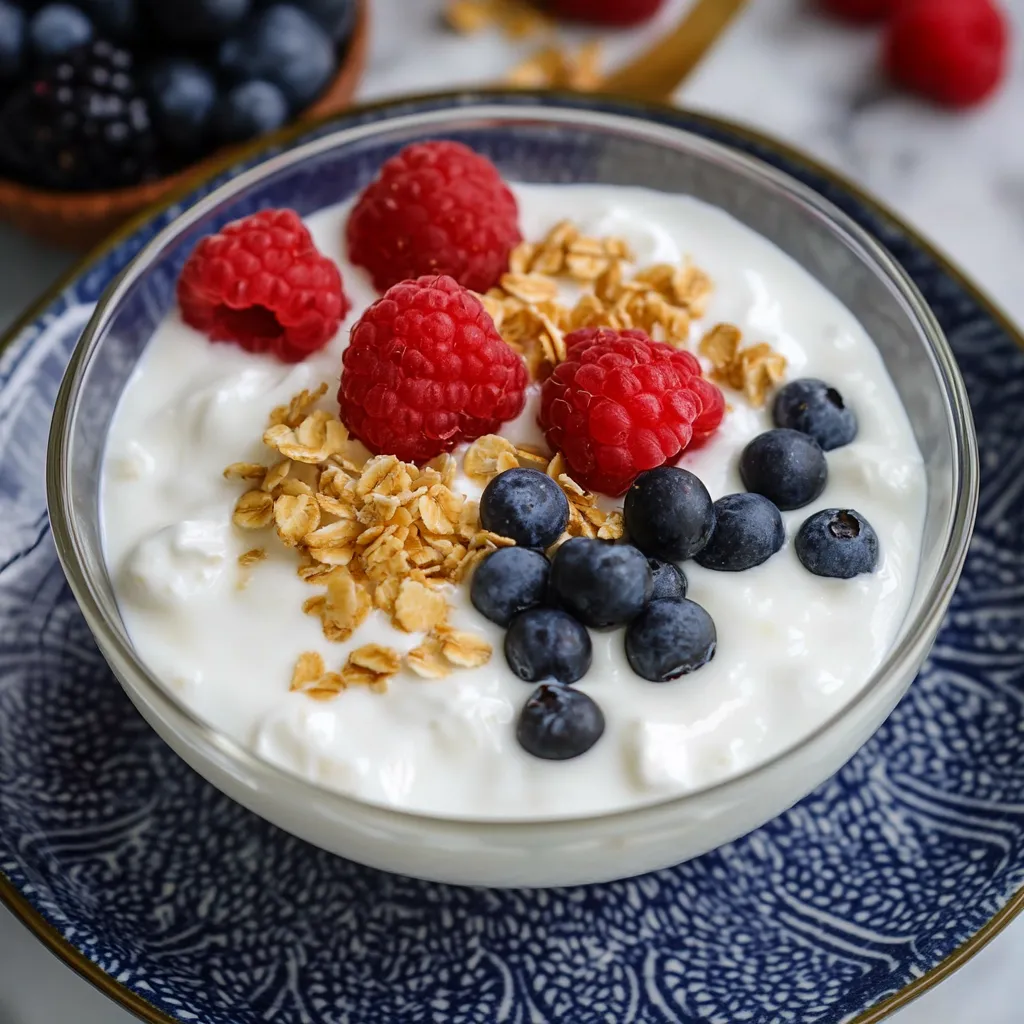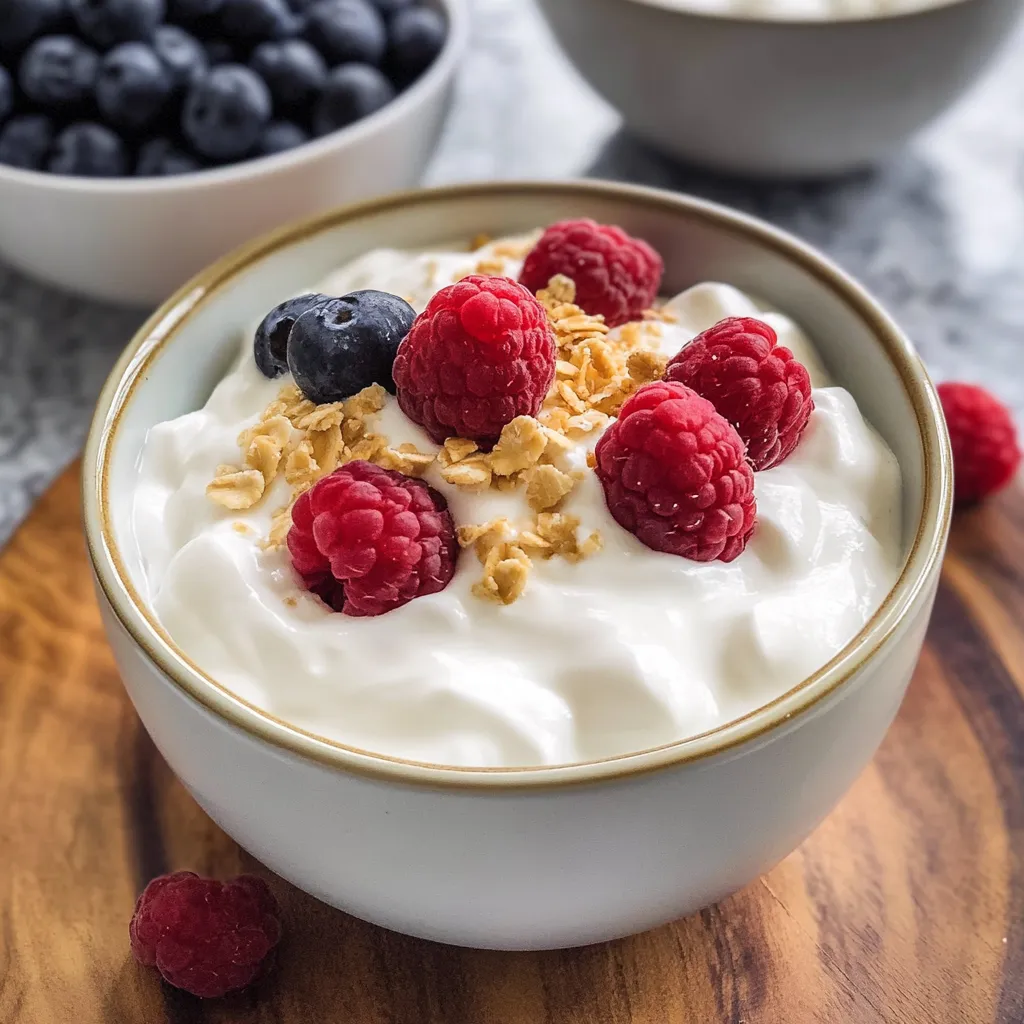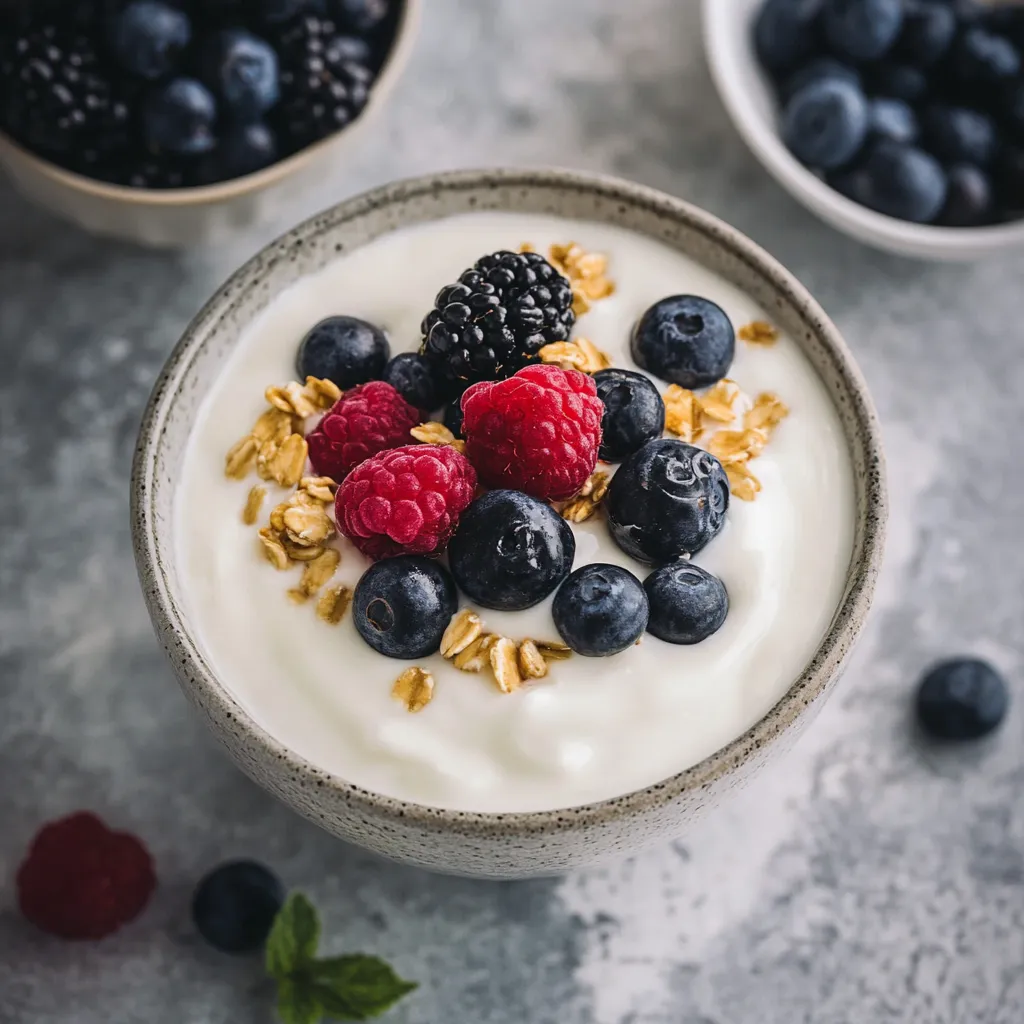 Add to Favorites
Add to Favorites
This homemade slow cooker yogurt has completely changed my breakfast routine since discovering how simple it is to make. The slow, gentle heating creates the creamiest texture without any special equipment or complicated techniques. The satisfaction of watching milk transform into velvety yogurt feels like kitchen magic every time.
I started making this yogurt during a particularly busy month when I needed healthy breakfast options but had zero time for morning prep. Now my family expects a fresh batch in the fridge at all times and I happily oblige.
Ingredients
- 64 ounces whole milk: use farm fresh if possible for richer flavor and better nutrition
- 4 ounces plain whole milk yogurt with live active cultures: this serves as your starter culture
Step-by-Step Instructions
- Heat the Milk:
- Pour all milk into your slow cooker and set to low heat. Allow it to reach 180°F which typically takes 2 to 3 hours. This initial heating kills any competing bacteria and helps create the perfect environment for yogurt cultures to thrive.
- Cool the Milk:
- Turn off and unplug your slow cooker. Let the milk cool naturally until it reaches 110°F approximately 2 to 3 hours. This cooling step is crucial as adding cultures to milk that is too hot will kill the beneficial bacteria.
- Introduce Yogurt Culture:
- Remove about half a cup of the warm milk and whisk it thoroughly with your yogurt starter until completely smooth and no lumps remain. Gently stir this mixture back into the slow cooker making sure it distributes evenly throughout all the milk.
- Incubation Period:
- Keep the slow cooker unplugged. Cover the entire unit with a thick kitchen towel to insulate and maintain temperature. Allow it to sit undisturbed for 10 to 12 hours or overnight. During this time the beneficial bacteria multiply and transform the milk into yogurt.
- Finish and Store:
- After incubation gently stir the yogurt until smooth. Transfer to individual jars or a large container and refrigerate for at least 4 hours before enjoying. The texture will continue to improve as it chills.

My favorite thing about homemade yogurt is watching my children decorate their bowls with seasonal fruits. My son creates elaborate patterns with berries while my daughter insists on a drizzle of honey and cinnamon. These morning yogurt rituals have become precious family moments.
Achieving the Perfect Thickness
The longer you incubate your yogurt the tangier and thicker it becomes. For mild yogurt aim for 8 hours while tangier varieties need 12 hours or more. Temperature is also crucial if your house is particularly cold wrap additional towels around the slow cooker or place it in the oven with just the light on to maintain warmth. Remember that yogurt will also thicken considerably once refrigerated so it may seem runnier than expected when first done.
Flavor Variations
Plain yogurt serves as a versatile base for countless flavor combinations. Add vanilla extract or fresh vanilla bean for a classic touch. Swirl in homemade fruit compotes after chilling for fruity varieties. For sweetened yogurt add honey maple syrup or agave after the yogurt has completely set as adding sweeteners before incubation can interfere with bacteria development. My personal favorite is adding lemon zest and a touch of honey which creates a bright refreshing flavor perfect for summer mornings.

Using Your Homemade Yogurt
Beyond breakfast this yogurt works beautifully in cooking. Use it in place of sour cream for lighter baked potatoes. Make creamy salad dressings with fresh herbs olive oil and a splash of lemon juice. Create marinades for chicken or lamb the lactic acid tenderizes meat wonderfully. For desserts layer with granola and fruit for parfaits or substitute for half the butter in quick bread recipes. The versatility extends to smoothies frozen yogurt treats and even homemade face masks the lactic acid offers gentle exfoliation for skin.
Troubleshooting Common Issues
If your yogurt turns out too runny next time ensure your milk reached the full 180°F and that your starter contained active live cultures. Sometimes older yogurt loses its potency as a starter. Yogurt separation is normal but excessive whey might indicate temperature fluctuations during incubation. For grainy texture your milk likely cooled too quickly or unevenly stir more gently next time. Remember that each batch of homemade yogurt develops its own personality much like sourdough each batch will have slight variations that make it unique.
Recipe FAQs
- → Can I use different types of milk for this yogurt?
Yes! While whole milk creates the creamiest result, you can use 2%, 1%, or skim milk. Just note that lower-fat milks will produce thinner yogurt. For ultra-creamy results, you can even add a tablespoon of heavy cream to the milk before heating.
- → What kind of yogurt should I use as a starter?
Use plain, unflavored yogurt with active live cultures as your starter. Check the ingredient list to confirm it contains cultures like L. bulgaricus and S. thermophilus. Both store-bought or homemade yogurt from a previous batch work well as starters.
- → How can I make flavored yogurt?
Add flavors after the yogurt is fully set and chilled. Mix in honey, maple syrup, vanilla extract, fruit preserves, or fresh fruit just before serving. For consistent texture, it's best to keep your main batch plain and flavor individual portions.
- → Why is temperature control important in this process?
The 180°F heating step pasteurizes the milk and denatures proteins for thicker yogurt. Cooling to 110°F ensures the environment is perfect for culturing—hot enough for cultures to thrive but not so hot they're destroyed. A kitchen thermometer helps achieve accurate results.
- → What if my yogurt turns out too thin?
If your yogurt is thinner than desired, strain it through cheesecloth or a coffee filter to remove whey and create thicker consistency. For future batches, ensure proper temperature control, adequate incubation time, and consider using higher fat content milk.
- → Can I use this yogurt in cooking?
Absolutely! Homemade yogurt works wonderfully in marinades, dressings, baked goods, smoothies, and as a sour cream substitute. The Greek-strained version makes particularly good tzatziki sauce and creamy desserts.
